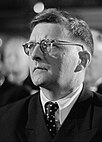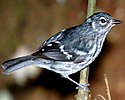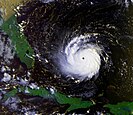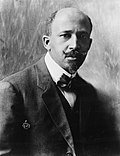Wikipedia:Today's featured article/August 2017
| << | Today's featured articles for August 2017 | >> | ||||
|---|---|---|---|---|---|---|
| Su | Mo | Tu | We | Th | Fr | Sa |
| 1 | 2 | 3 | 4 | 5 | ||
| 6 | 7 | 8 | 9 | 10 | 11 | 12 |
| 13 | 14 | 15 | 16 | 17 | 18 | 19 |
| 20 | 21 | 22 | 23 | 24 | 25 | 26 |
| 27 | 28 | 29 | 30 | 31 | ||
August 1
Peter Evans (born 1 August 1961) is a former breaststroke swimmer for Australia who won four Olympic medals in the 1980s. After training in the UK under David Haller, he returned to Australia in 1980. He rebuffed Australian government pressure to boycott the 1980 Moscow Olympics in response to the Soviet invasion of Afghanistan, and won gold in the 4×100 m medley relay as one of the Quietly Confident Quartet. He also won bronze in the 100 m breaststroke. After competing for the University of Arizona in the US, he returned to Australia for the 1982 Commonwealth Games in Brisbane, winning silver in the 100 m breaststroke and gold in the medley relay. He competed in his second Olympics in Los Angeles in 1984, winning bronze in the 100 m breaststroke and the medley relay. Evans retired from swimming after missing selection for the 1986 Commonwealth Games, and unsuccessfully attempted to follow his father Max into politics before pursuing a career in business. (Full article...)
Part of the Quietly Confident Quartet featured topic.
August 2
The teleosts (from Greek for "complete bone") are an infraclass of ray-finned fishes that arose in the Triassic period. Making up 96 percent of all known fish species, this diverse group includes about 40 orders and 448 families. They inhabit oceans at all depths, estuaries, rivers, lakes and swamps. They range in size from the giant oarfish, measuring 25 feet (7.6 m) or more, and the ocean sunfish, weighing over 2.2 short tons (2 tonnes), to the male anglerfish Photocorynus spiniceps, just 0.24 inches (6.2 mm) long. Teleosts can be torpedo-shaped, flattened (vertically or horizontally) or cylindrical, and some, like the anglerfish and seahorse, have unique shapes. They can protrude their jaws, enabling them to grab prey and draw it into their mouth. Depicted in art over the centuries, teleosts are economically important to humans. They are harvested for food, captured for sport, kept in aquariums, and used in research, especially in the fields of genetics and developmental biology. (Full article...)
August 3
William Cooley (1783–1863) was one of the first American settlers in what is now Broward County, in the US state of Florida. Born in Maryland, he arrived in East Florida as part of a military expedition. He was a farmer in the northern part of the territory before moving south, where he traded with local Indians and continued to farm. He sided with natives in a land dispute against a merchant who had received a large grant from the King of Spain and was evicting them from their lands. Unhappy with the actions of the Spanish, he moved to the New River in 1826, an area removed from their influence. He was a salvager and farmer, cultivating and milling arrowroot. His fortune and influence grew, and he became the first judge in the settlement. His decision in a case involving the murder of a local chief antagonized the natives, who attacked the settlement in revenge in January 1836 during the Second Seminole War, killing his family. Cooley was one of the first city councilors of Tampa, serving three terms. (Full article...)
August 4
Rare Replay is a compilation of 30 video games by developer Rare and its predecessor, Ultimate Play the Game, released on August 4, 2015. The emulated games span 30 years and multiple genres and consoles, from the ZX Spectrum to the Xbox 360. The compilation adds cheats to make the older games easier and a challenge mode of specific sequences culled from the games. Player progress is rewarded with behind-the-scenes footage and interviews about Rare's major and unreleased games. Rare incorporated six hardware emulators in the package, and used an unannounced Xbox 360 emulation from its parent company, Microsoft. Rare Replay was released worldwide as an Xbox One exclusive to generally favorable reviews. Critics appreciated its archival game content and developer interviews, but faulted technical issues in the Xbox 360 emulation and game installation. Among its games, reviewers preferred Rare's Nintendo 64 classics, especially Blast Corps, but disliked Perfect Dark Zero, Grabbed by the Ghoulies, and the Spectrum titles. Rare Replay became Rare's first United Kingdom all-format charts bestseller since Banjo-Kazooie in 1998. (Full article...)
August 5
The name-letter effect is the tendency of people to prefer the letters in their name over other letters in the alphabet. Discovered in 1985 by the Belgian psychologist Jozef Nuttin, the effect has been replicated in dozens of studies. Whether subjects are asked to rank all letters of the alphabet, rate letters individually, choose one of two letters, or pick a small set of letters, on average people prefer the letters in their own name, but few are aware that they are choosing letters from their name. The effect has been attributed to the fact that most people associate their names with themselves, and like themselves. People who do not like themselves tend not to exhibit the name-letter effect. In psychological assessments, the Name Letter Preference Task is widely used to estimate implicit self-esteem. There is some evidence that people have been influenced by the name-letter effect even when making important decisions, although many studies have been controversial. (Full article...)
August 6
The Chase is an American television quiz show based on the British program of the same name. It premiered on August 6, 2013, on the Game Show Network, hosted by Brooke Burns and featuring Mark Labbett as a quiz show genius called the "chaser". The American version of the show follows the same general format as the original UK version, but with teams of three contestants instead of four. Each player who stays ahead of the chaser on the gameboard retains the winnings for that round. Successful contestants advance to the Final Chase, in which they answer questions as a team playing for an equal share of the prize fund accumulated during the episode. The Chase earned positive reviews, as did Burns and Labbett individually, and the pacing of the game was mentioned favorably. At the 2014 Daytime Emmy Awards, the series was nominated for Outstanding Game Show, and Burns was nominated two years later for Outstanding Game Show Host. (Full article...)
August 7
The Disneyland Railroad is a 3-foot (914 mm) narrow-gauge heritage railroad and attraction in the Disneyland theme park of the Disneyland Resort in Anaheim, California, in the United States. Its route is 1.2 miles (1.9 km) long with four train stations, encircling almost everything in the park. The rail line, which was built by WED Enterprises, is operated with two steam locomotives built by WED and three historic steam locomotives originally built by Baldwin Locomotive Works. The attraction originated as a concept created by Walt Disney, who drew inspiration from the ridable miniature Carolwood Pacific Railroad built in his backyard. Since 1955 when the Disneyland Railroad first opened to the public at the park's grand opening, it has been consistently billed as one of the top attractions, and for many years visitors had to buy a top-tier ticket to ride the train. It is one of the world's most popular steam-powered railroads, with an estimated 6.6 million passengers each year. (Full article...)
August 8
Quehanna Wild Area is a wildlife area in Cameron, Clearfield, and Elk counties in the U.S. state of Pennsylvania. At 48,186 acres (75 sq mi; 195 km2), it is the largest state forest wild area in Pennsylvania, and hosts herds of native elk. In the 19th and early 20th centuries, the logging industry cut the area's virgin forests. In 1955 the Curtiss-Wright Corporation bought 80 square miles (210 km2) of state forest for a facility developing nuclear-powered jet engines. A succession of tenants further contaminated the nuclear reactor facility and its hot cells with radioactive isotopes, including strontium-90 and cobalt-60. Pennsylvania reacquired the land in 1963 and 1967, and in 1965 established Quehanna as a wild area, but retained the nuclear facility and industrial complex. The facilities were used to treat hardwood flooring with radiation until 2002. The cleanup of the reactor and hot cells took over eight years and cost $30 million. Quehanna Wild Area has many sites with radioactive and toxic waste; some have been cleaned up, but others have been dug up by black bears and white-tailed deer. (Full article...)
August 9
The Leningrad première of Shostakovich's Symphony No. 7 took place on 9 August 1942 during the Second World War, while the city (now Saint Petersburg) was under siege by Nazi German forces. Dmitri Shostakovich (pictured) had intended for the piece to be premièred by the Leningrad Philharmonic Orchestra, but they had been evacuated because of the siege, along with the composer, and the world première was instead held in Kuybyshev. The Leningrad première was performed by the surviving musicians of the Leningrad Radio Orchestra, supplemented with military performers. Most of the musicians were starving, and three died during rehearsals. Supported by a Soviet military offensive intended to silence German forces, the performance was a success, prompting an hour-long ovation. The symphony was broadcast to the German lines by loudspeaker as a form of psychological warfare. The Leningrad première was considered by music critics to be one of the most important artistic performances of the war because of its psychological and political effects. Reunion concerts featuring surviving musicians were convened in 1964 and 1992 to commemorate the event. (Full article...)
August 10
Lynx is a constellation in the northern sky that was introduced in the 17th century by Johannes Hevelius. Named after the animal, it is a faint constellation whose brightest stars form a zigzag line. The orange giant Alpha Lyncis is the brightest star in the constellation, while the semiregular variable star Y Lyncis is a popular target for amateur astronomers. Six star systems have been found to contain planets. Those of 6 Lyncis and HD 75898 were discovered by the Doppler method; those of XO-2, XO-4, XO-5 and WASP-13 were observed as they passed in front of the host star. Within the constellation's borders lie NGC 2419, an unusually remote globular cluster; the galaxy NGC 2770, which has hosted three recent Type Ib supernovae; the distant quasar APM 08279+5255, whose light is magnified and split into multiple images by the gravitational lensing effect of a foreground galaxy; and the Lynx Supercluster, which was the most distant supercluster known at the time of its discovery in 1999. (Full article...)
August 11
The elfin woods warbler (Setophaga angelae) is an uncommon bird species endemic to Puerto Rico. Discovered in 1968, it is the most recently described species of the New World warblers. The name angelae is a tribute to Angela Kepler, one of its discoverers. Characteristic of Antillean warblers (S. adelaidae, S. delicata, S. plumbea and S. pharetra), the species features a long bill and short, round wings (averaging 53.8 mm or 2.12 in). An insectivore, it feeds by gleaning small insects off leaves. El Yunque National Forest, where it was first captured, was initially believed to be its only habitat, but its largest population has been found in the Maricao State Forest. Due to its small numbers and restricted habitats, conservation efforts were begun in 1982 to protect this species. It is not in immediate danger as it lives mainly in protected forest, but potential threats include habitat reduction, natural disasters, and introduced species such as rats and small Asian mongooses. (Full article...)
August 12
In the Battle of the Falaise Pocket (12–21 August 1944) in the Second World War, Allied forces encircled and destroyed most of the German Army Group B west of the Seine river in a pocket at Falaise in northwestern France. It was the decisive engagement of the Battle of Normandy. The Americans had broken out from the Normandy beachhead, the Third U.S. Army under General George Patton was rapidly advancing, and British and Canadian forces were launching offensives south of Caumont and Caen. Adolf Hitler ordered Field Marshal Günther von Kluge, the commander of Army Group B, to conduct a counter-offensive at Mortain instead of withdrawing. Four depleted panzer divisions were not enough to stop the First U.S. Army, which converged with the British Second Army and the First Canadian Army on the Falaise–Chambois area, directed by the Allied ground forces commander, General Bernard Montgomery. German counter-attacks forced some gaps in the Allied lines, but by the evening of 21 August the pocket had been sealed, with around 50,000 Germans trapped inside. Many escaped, but losses in men and equipment were huge. A few days later, the Allies liberated Paris. (Full article...)
August 13
Bert T. Combs (August 13, 1911 – December 4, 1991) was an American jurist and politician from Kentucky. After being decorated for prosecuting Japanese war criminals before military tribunals during World War II, he returned to his law practice in Prestonsburg. In 1951 he was appointed by Governor Lawrence Wetherby to fill a vacancy on the Kentucky Court of Appeals, and was elected to a full term later that year. He was elected the 50th Governor of Kentucky in 1959 on his second run for the office. Combs secured passage early in his term of a larger-than-needed three percent sales tax to pay a bonus to the state's military veterans, and used much of the surplus to improve the state's educational system and expand the state park and highway systems. He was appointed to the Sixth Circuit Court of Appeals by President Lyndon B. Johnson in 1967, serving three years. In 1985 Combs' challenge to the state's education funding model led to a court ruling that declared Kentucky's entire public school system unconstitutional. In 1991 Combs was caught in a flash flood on the road, and died of hypothermia. (Full article...)
August 14
xx is the debut album by English indie pop band the xx, released by Young Turks, an imprint of XL Recordings, on 14 August 2009. Audio engineer Rodaidh McDonald and the xx strove for an intimate, unembellished sound. The band's Jamie Smith produced xx on his laptop, mixing in electronic beats. Strongly influenced by R&B acts, the album also drew comparisons to alternative rock, electronica, and post-punk sounds. The melancholic songs on xx featured minimalist arrangements. Romy Madley Croft and Oliver Sim sang most of these as low-key duets, and wrote emotional lyrics about love, intimacy, loss, and desire. The album received widespread acclaim from critics, many naming it one of the year's best records. It became a sleeper hit in Britain and the United States. Although none of its singles became hits, xx benefited from the licensing of its songs on television and the band's 2010 Mercury Prize win for the album. In 2013, xx was ranked number 237 on NME magazine's list of the 500 greatest albums of all time. (Full article...)
August 15
Jennifer Lawrence (born August 15, 1990) is an American actress. After starring in the television series The Bill Engvall Show (2007–2009) and making her film debut in Garden Party (2008), she had her breakthrough with Winter's Bone in 2010. She took over the role of Mystique in the X-Men film series in 2011, and starred as Katniss Everdeen in the top-grossing Hunger Games films (2012–2015). She became the second-youngest recipient of the Academy Award for Best Actress for playing a depressed widow in Silver Linings Playbook (2012). She won a BAFTA Award for Best Actress in a Supporting Role for playing a troubled wife in American Hustle (2013), and received Golden Globe Awards for both of these films and for playing an inventor in the biopic Joy (2015). Lawrence's films have grossed in excess of $5.5 billion globally, and she has been the world's highest-paid actress since 2015. Her many awards and honors include appearances in Time's 100 most influential people in the world in 2013 and the Forbes Celebrity 100 in 2014 and 2016. She is a vocal advocate of feminism and gender equality. (Full article...)
August 16
Richard II (1367–1400) was King of England, the last of the main-line kings of the House of Plantagenet. He ruled from 1377 until he was deposed in 1399. A son of Edward, the Black Prince, he was born during the reign of his grandfather, Edward III. Richard was tall, good-looking and intelligent, but he may have suffered from a personality disorder, especially toward the end of his reign. Less warlike than his father or grandfather, he sought to bring an end to the Hundred Years' War started by Edward III. A firm believer in the royal prerogative, he restrained the power of the aristocracy and relied on a private retinue for military protection. He promoted an elevated image of himself, and art and culture were at the centre of his court, in contrast to the fraternal, martial court of his grandfather. Shakespeare's play Richard II portrays his misrule and deposition as responsible for the 15th-century Wars of the Roses, but modern historians disagree, attributing his downfall to practices that were unacceptable to the political establishment. (Full article...)
August 17
Hurricane Andrew (1992) was an Atlantic hurricane, the most destructive one ever in Florida. Named as a tropical storm on August 17, it hit the northwestern Bahamas six days later at Category 5 strength, leaving 1,700 people homeless, killing four, and disrupting the transport, communications, water, sanitation, agriculture, and fishing sectors. It struck Florida on August 24 with sustained wind speeds as high as 165 mph (270 km/h). In the city of Homestead in Miami-Dade County, it stripped many homes of all but their concrete foundations. Statewide, Andrew destroyed or damaged over 164,000 homes, killed 44 people, and left a record $25 billion in damage. A facility housing Burmese pythons was destroyed, releasing them into the Everglades, where they now number up to 300,000. The hurricane destroyed oil platforms in the Gulf of Mexico before hitting Louisiana, where it downed 80% of the trees in the Atchafalaya River Basin, devastated agriculture, and caused 17 deaths. The storm spawned at least 28 tornadoes along the Gulf Coast, mostly in Alabama, Georgia, and Mississippi. In total, Andrew caused $26.5 billion in damage and left 65 people dead. (Full article...)
August 18
Heathenry, or Germanic Neopaganism, is a modern Pagan religion. The practitioners of this new religious movement model their faith on the belief systems of Germanic peoples of Iron Age and Early Medieval Europe. Heathenry uses historical, archaeological, and folkloric evidence as a basis. It does not have a unified theology and typically centers on a pantheon of deities. It adopts cosmological views, including an animistic view of the cosmos in which the natural world is imbued with spirits. Many practitioners are solitary; other members of the Heathen community assemble in small groups to perform their rites in specially constructed buildings or outdoors (pictured). Heathen ethical systems place great emphasis on honor, personal integrity, and loyalty, while beliefs about an afterlife are varied and rarely emphasized. Many groups adopt a universalist perspective which holds that the religion is open to all, irrespective of ethnic or racial identity. Scholarly estimates put the number of Heathens at no more than 20,000 worldwide, with communities of practitioners active in Europe, North America, and Australasia. (Full article...)
August 19
The Bone Wars were rivalries between paleontologists, mainly Edward Drinker Cope and Othniel Charles Marsh (pictured), that led to a surge of fossil discoveries during the Gilded Age of American history. Cope, of the Academy of Natural Sciences in Philadelphia, and Marsh, of the Peabody Museum of Natural History at Yale, competed using underhanded methods, resorting to bribery, theft, destruction of bones, and mutual attacks in scientific publications. They sought fossils in rich bone beds in Colorado, Nebraska, and Wyoming. From 1877 to 1892, they used their wealth and influence to finance their own expeditions and to procure services and dinosaur bones from fossil hunters. Cope and Marsh were financially and socially ruined by their attempts to disgrace each other, but their contributions to science and the field of paleontology, including many unopened boxes of fossils found after their deaths, were massive. Their efforts led to many new descriptions of dinosaur species, of which 32 remain valid today. The Bone Wars shed light on prehistoric life and sparked the public's interest in dinosaurs, leading to continued fossil excavation in North America in the decades to follow. (Full article...)
August 20
Lundomys molitor, commonly known as the greater marsh rat, is a semiaquatic rat species from southeastern South America. Its distribution is now restricted to Uruguay and nearby Rio Grande do Sul, Brazil, but it previously ranged northward into Minas Gerais, Brazil, and southward into eastern Argentina. It was first described in 1887 by Danish zoologist Herluf Winge, who reviewed materials collected by Peter Wilhelm Lund in the caves of Lagoa Santa in Minas Gerais. The Argentine form may have been distinct from the form that now lives in Brazil and Uruguay. It is a large rodent, with a head-and-body length averaging 193 mm (7.6 in). Its tail is longer than the head and body combined. Its coat, yellow-brown at the sides, is long, dense, and soft. It is an excellent swimmer, propelled by large hindfeet with conspicuous interdigital webbing. It builds nests above the water supported by reeds. It is not currently threatened, reflecting a relatively wide distribution and the absence of evidence for a decline in populations. (Full article...)
August 21
"My Happiness" is a song by Australian rock band Powderfinger (pictured), released by Universal Music Australia on 21 August 2000 as the first single from the band's fourth album, Odyssey Number Five. Frontman Bernard Fanning, inspired by a love of gospel and soul music, wrote the lyrics for "My Happiness" as a reflection on the loneliness the band felt while touring. The rest of the band are co-credited with Fanning for composing the track. Powderfinger's most successful single, it peaked at number four on the Australian ARIA Singles Chart, was instantly successful in New Zealand, and was the first Powderfinger song to appear on the American Hot Modern Rock Tracks. It won an ARIA and an APRA Award, topped the Triple J Hottest 100 poll in 2000, and placed 27th in the 2009 Triple J Hottest 100 of All Time poll. Along with the single "My Kind of Scene", "My Happiness" was highly praised by critics; even negative reviews of Odyssey Number Five noted it as a highlight, especially for its catchy chorus. (Full article...)
August 22
The 2015 Vuelta a España (Tour of Spain) was the 70th edition of the three-week race, one of cycling's Grand Tours. The 3,358.1-kilometre (2,086.6 mi) race included 21 stages, from Marbella on 22 August to Madrid on 13 September. Astana Pro Team's Fabio Aru (pictured) won the race, with Joaquim Rodríguez (Team Katusha) second and Rafał Majka (Tinkoff–Saxo) third. The early leaders were Esteban Chaves (Orica–GreenEDGE) and Tom Dumoulin (Team Giant–Alpecin). Aru took over the lead in Andorra following Stage 11, and kept it for five stages through the mountains of northern Spain before losing it to Rodríguez on Stage 16. Dumoulin retook the lead on Stage 17, but was dropped by Aru in the next-to-last stage, falling to sixth place overall. It was Aru's first Grand Tour victory. The points classification, decided during the final stage, was won by Alejandro Valverde (Movistar Team), while Rodriguez won the combination classification. The mountains classification was won by Omar Fraile (Caja Rural–Seguros RGA). Dumoulin won the combativity award, while Movistar won the team prize. (Full article...)
Part of the 2015 Vuelta a España featured topic.
August 23
T3 was a sea-going torpedo boat operated by the Royal Yugoslav Navy between 1921 and 1941. Originally 78 T, a 250t-class torpedo boat commissioned on 23 August 1914 by the Austro-Hungarian Navy, she saw active service during World War I, performing convoy, escort and minesweeping tasks, anti-submarine operations and shore bombardment missions. Following Austria-Hungary's defeat in 1918, she was allocated to Yugoslavia and renamed T3. She was captured by the Italians during the Axis invasion of Yugoslavia in April 1941. After her main armament was modernised, she served with the Royal Italian Navy as T3, although she was only used for coastal and second-line tasks. Following the Italian capitulation in September 1943, she was captured by Germany, and after being fitted with additional anti-aircraft guns, she served with the German Navy and the Navy of the Independent State of Croatia as TA48. In German and Croatian service her crew of 52 consisted entirely of Croatian officers and enlisted men. She was sunk by Allied aircraft in February 1945 while in the port of Trieste, where she had been built. (Full article...)
August 24
Palsgraf v. Long Island Railroad Co. (1928) is a leading case in American tort law on the question of liability to an unforeseeable plaintiff. Arising out of an unusual incident on August 24, 1924, the case has been studied by generations of law students. The plaintiff, Helen Palsgraf, was injured as she was boarding a train when a man (aided by railroad employees) dropped a package that exploded, causing a large coin-operated scale on the platform to hit her. She sued the railroad, arguing that she had been harmed by the negligence of its employees while they assisted the man. She won a jury verdict but lost on appeal to the New York Court of Appeals, the highest state court in New York; its opinion was written by Chief Judge Benjamin Cardozo (pictured), a leading figure in the development of American common law and later a Supreme Court justice. Cardozo wrote for a majority of the Court of Appeals, ruling that the railroad was not negligent because its employees, in helping the man board, did not have a duty of care to Palsgraf as injury to her was not a foreseeable harm from aiding a man with a package. (Full article...)
August 25
The Fade Out is a crime comic created by writer Ed Brubaker and artist Sean Phillips with the help of colorist Elizabeth Breitweiser and research assistant Amy Condit. Twelve issues were published by Image Comics between August 2014 and January 2016, and republished in paperback and hardcover formats. The story, partly inspired by the life of Brubaker's uncle, is set in 1948 and features Charlie Parish, a Hollywood screenwriter suffering from posttraumatic stress disorder and fronting for his blacklisted best friend, Gil. When Charlie wakes from a blackout in the same room as a murdered starlet, he and Gil set out to bring her killer to justice. As they learn more about her troubled past, they find themselves up against powerful Hollywood elites. Although Brubaker had been concerned the premise was not commercial enough to have wide appeal, The Fade Out sold better than any of the authors' previous collaborations and early issues went through several printings. The series received positive reviews from critics, who enjoyed the tragic conclusion. (Full article...)
August 26
Operation Bernhard was an exercise by Nazi Germany to forge British bank notes. The initial plan was to drop the notes over Britain to bring about a collapse of the economy, but the operation was closed in early 1942, about a year after its head, Alfred Naujocks (pictured), fell out of favour with his superior officer, Reinhard Heydrich. It was reopened in July as a counterfeiting operation to finance German intelligence operations. Prisoners were sent to Sachsenhausen concentration camp to work under SS Major Bernhard Krüger, producing British notes until mid-1945 worth between £130 and £300 million. Counterfeit notes from the operation were used to pay the Turkish agent Elyesa Bazna—code-named Cicero—for his work in obtaining secrets from the British ambassador in Ankara, Turkey. Another £100,000 helped to free the Italian leader Benito Mussolini in the Gran Sasso raid in September 1943. The operation was dramatised in a 1981 BBC comedy-drama miniseries, Private Schulz, and in a 2007 Austrian film, The Counterfeiters. (Full article...)
August 27
Lead is a chemical element with symbol Pb and atomic number 82. A heavy metal with a density exceeding that of most common materials, it is malleable and has a low melting point for a metal. Chemically, it is a relatively unreactive post-transition metal. Lead was known to prehistoric people. A principal ore of lead, galena, often bears silver; interest in silver sparked lead extraction and use in ancient Rome. Lead production declined after the fall of Rome and did not reach comparable levels until the Industrial Revolution. Nowadays, global production of lead is about ten million tonnes annually. Its high density, low melting point, high malleability, relative inertness to oxidation, relative abundance, and low cost have resulted in its extensive use in construction, plumbing, batteries, bullets and shot, weights, solders, pewters, fusible alloys, and radiation shielding. In the late 19th century, lead was recognized as highly toxic, and since then it has been phased out for many uses. A neurotoxin that accumulates in soft tissues and bones, it can damage the nervous system and cause brain and blood disorders. (Full article...)
August 28
W. E. B. Du Bois (1868–1963) was an American sociologist, historian and civil rights activist. The first African American to earn a doctorate from Harvard, he became a professor of history, sociology and economics at Atlanta University. He rose to national prominence as the leader of the Niagara Movement, a group of African-American activists who wanted equal rights for blacks, and was one of the co-founders of the National Association for the Advancement of Colored People (NAACP) in 1909. He wrote one of the first scientific treatises in the field of American sociology, and published three autobiographies. Black Reconstruction in America (1935) challenged the prevailing orthodoxy that blacks were responsible for the failures of the Reconstruction Era. On August 28, 1963, a day after his death, his book The Souls of Black Folk was highlighted by Roy Wilkins at the March on Washington, and hundreds of thousands of marchers honored him with a moment of silence. A year later, the US Civil Rights Act, embodying many of the reforms for which he had campaigned his entire life, was enacted. (Full article...)
August 29
Nikolai Rimsky-Korsakov (1844–1908) was a Russian composer, a member of a group of prominent composers known as The Five, who worked together in Saint Petersburg in the mid-19th century. Considered a master of orchestration, his best-known compositions, which include Capriccio Espagnol, the Russian Easter Festival Overture, and the symphonic suite Scheherazade, are considered staples of the classical music repertoire, along with suites and excerpts from some of his 15 operas. Scheherazade is an example of Rimsky-Korsakov's frequent use of fairy tale and folk subjects; he also left a considerable body of original Russian nationalist compositions. His preparation of works by The Five for performance brought them into the active classical repertoire, although his editing of the music of Modest Mussorgsky created controversy. As a shaper of a generation of younger composers and musicians during his decades as an educator, he is considered the main architect of what the classical music public considers the Russian style of composition. (Full article...)
August 30
Pallas's leaf warbler (Phylloscopus proregulus) is a migratory bird that breeds in mountain forests from southern Siberia east to northern Mongolia and northeastern China. It is named for German zoologist Peter Simon Pallas, who first described it. It winters mainly in and near southern China, although in recent decades increasing numbers have been found in Europe in autumn. One of the smallest Eurasian leaf warblers, it has a relatively large head and short tail. It has greenish upperparts and white underparts, a lemon-yellow rump, and yellow double wingbars and supercilia. The female builds a cup nest in a tree or bush, and incubates four to six eggs that hatch after 12 or 13 days. The chicks are fed mainly by the female and fledge when they are 12–14 days old. Pallas's leaf warbler feeds on small insects and spiders. It forages in bushes and trees, picking items from leaves or catching prey in short flights or while hovering. The species has a large range, its numbers are believed to be stable, and it is not endangered. (Full article...)
August 31
The meteorological history of Hurricane Ivan (2004) spans 26 days, the tenth longest storm duration of any Atlantic hurricane on record. The tropical cyclone developed on August 31 from a tropical wave that moved off the coast of Africa. Tracking westward due to a ridge, it developed into Tropical Depression Nine on September 2, gradually intensifying until September 5, when it underwent rapid deepening and reached Category 4 status on the Saffir–Simpson Hurricane Scale. At the time Ivan was the southernmost major North Atlantic hurricane on record. It was weakened by dry air but gradually reorganized, passing just south of Grenada as a major hurricane on September 7. The hurricane attained Category 5 status in the central Caribbean Sea, and passed just south of Jamaica, the Cayman Islands, and western Cuba with winds at or slightly below that. Ivan gradually weakened before making landfall just west of Gulf Shores, Alabama, on September 16 with winds of 120 mph (195 km/h). After weakening, crossing Florida, restrengthening, and making another landfall in Louisiana, its circulation dissipated in Texas on September 25. (Full article...)
























